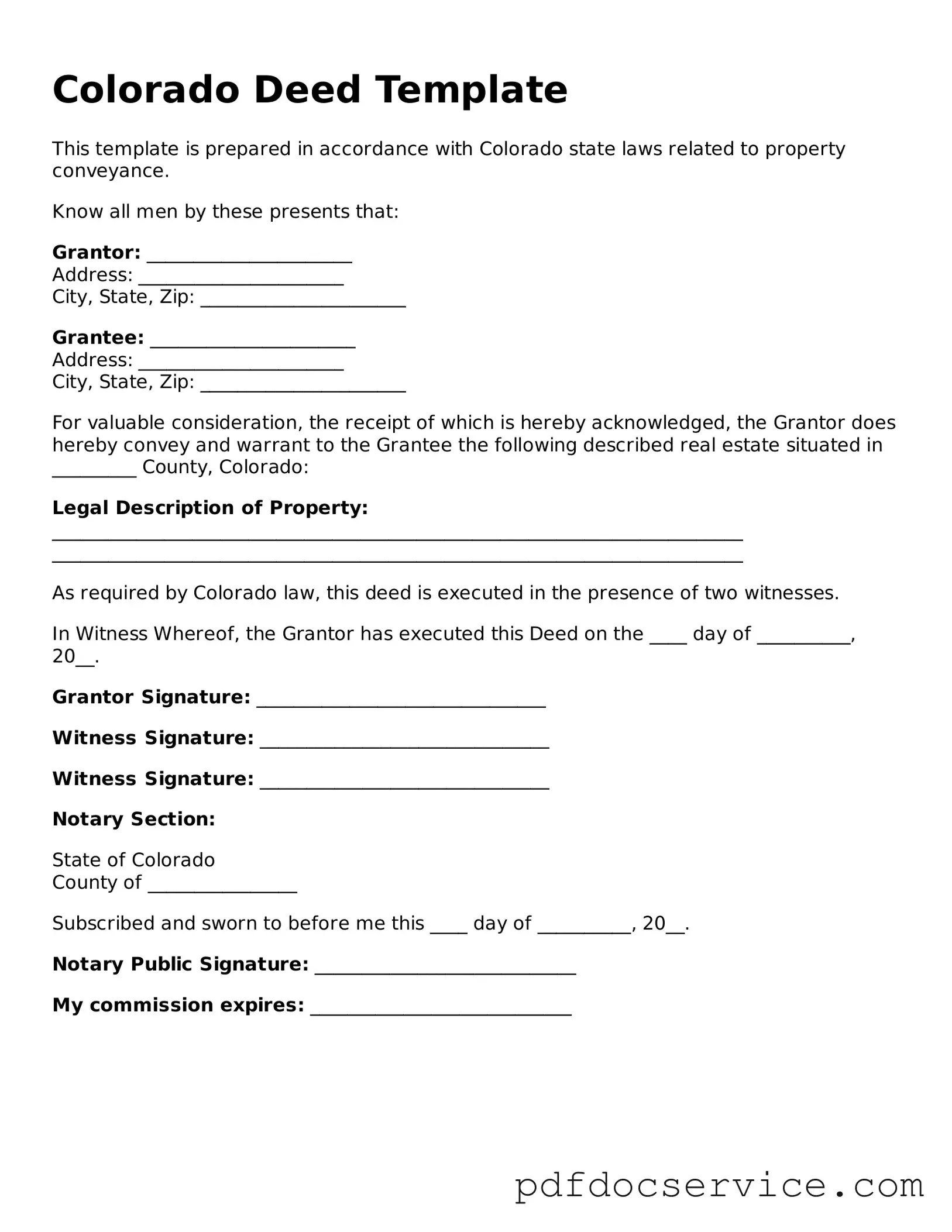When it comes to transferring property ownership in Colorado, understanding the Colorado Deed form is essential. This legal document serves as the official record of the transfer, ensuring that the new owner has clear title to the property. Various types of deeds exist, including warranty deeds, quitclaim deeds, and special warranty deeds, each with its unique features and purposes. The form requires specific information, such as the names of the grantor (the seller) and grantee (the buyer), a detailed description of the property, and any relevant considerations or conditions tied to the transfer. Additionally, it must be signed, notarized, and recorded with the county clerk and recorder to be legally binding. Familiarity with the Colorado Deed form not only helps streamline the transaction process but also protects the rights of all parties involved, making it a crucial element in real estate dealings within the state.
